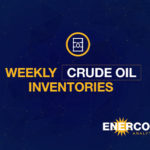Efficiency is way more important than pricing: Lesar
Halliburton (NYSE: HAL) released its fourth quarter 2016 results Monday, reporting numbers that indicate that the recovery is well underway in North America’s oil and gas sector.
Improved pricing in the second half of the year saw E&P companies drilling more wells, which led to higher demand for Halliburton’s services and a tightening in the equipment market.
“First and foremost, I am very pleased to announce that we returned to operating profitability in North America after three quarters of losing money,” said Halliburton CEO David Lesar on the company’s conference call. ” We achieved incremental margins of 65% in North America. And we continue to clearly gain market share as we outgrew our primary competitor in not only North America, but Latin America and the Eastern Hemisphere.”
Adjusted income from operations in the fourth quarter of the year, excluding impairments and other charges and a class action lawsuit settlement, was $35 million, or $0.04 per diluted share, Haliburton said in its press release Monday. This represents a $0.03-per-diluted-share increase from the previous quarter, sequentially.
Halliburton’s total revenue in the fourth quarter of 2016 was $4.0 billion, which increased 5% from revenue of $3.8 billion in the third quarter of 2016. Reported operating income for the fourth quarter of 2016 was $53 million. Adjusted operating income for the fourth quarter of 2016 was $276 million, compared to operating income of $128 million for the third quarter of 2016, which did not include any impairments or other charges.
One story in the U.S., another internationally
Improvements in North American markets were partially offset by results seen internationally, however. Lesar said that the recovery seemed to be underway in North America, but a separate story was playing out in other parts of the globe.
“Despite the positive sentiment surrounding North America land, it is important to remember that our world is still a tale of two cycles. While the North America market appears to have rounded the corner, it is on the upswing. The international downswing is still playing out,” HAL’s CEO explained.
Customers in North America were ready to go back to work, and continue to remain positive in 2017, Lesar said, but low oil prices had stretched budgets thin internationally, and would need more time to recover. Throughout full-year 2016, low oil prices were especially hard on deepwater and mature field markets, said Lesar. “These headwinds still persist today.”
Halliburton high-grading customers as oil prices improve
As drilling activity in North America picks up, demand for equipment is rising and causing the market to tighten, Halliburton’s management said during its call. The company has decided to make a conscious decision to give up market share in this environment to work with customers that Halliburton feels are more likely to pay a premium for its services.
“In Q4, as demand for our equipment increased and availability tightened, our customer discussions revolved around the unsustainable pricing that was in place, and the need for us to make a return before we were willing to continue to work for them or add new equipment,” Lesar explained. “If a customer agreed to better pricing, we continued to work with them. If not, we took that equipment and used it to fill the incremental demand with a customer that shared our view on how to work together and make better wells.”
When asked about how Lesar would think about the costs of services increasing in the future if he were working in an E&P, Halliburton’s CEO indicated that upstream companies should be looking at increasing their budgets more than 5%-10% from where they currently stand.
“Clearly some of the cost reductions are structural, but I think as the equipment tightens, commodity prices increase and everybody wants availability of equipment when they want it, where they want it and how they want it, I don’t see that there is going to be the ability to – for the customer, to hold prices down.
“Efficiency is way more important than pricing. And those customers that want to work with us to keep our equipment efficient are those that we are going to work with, and I think that we’ll both be winners in that scenario,” he said.





